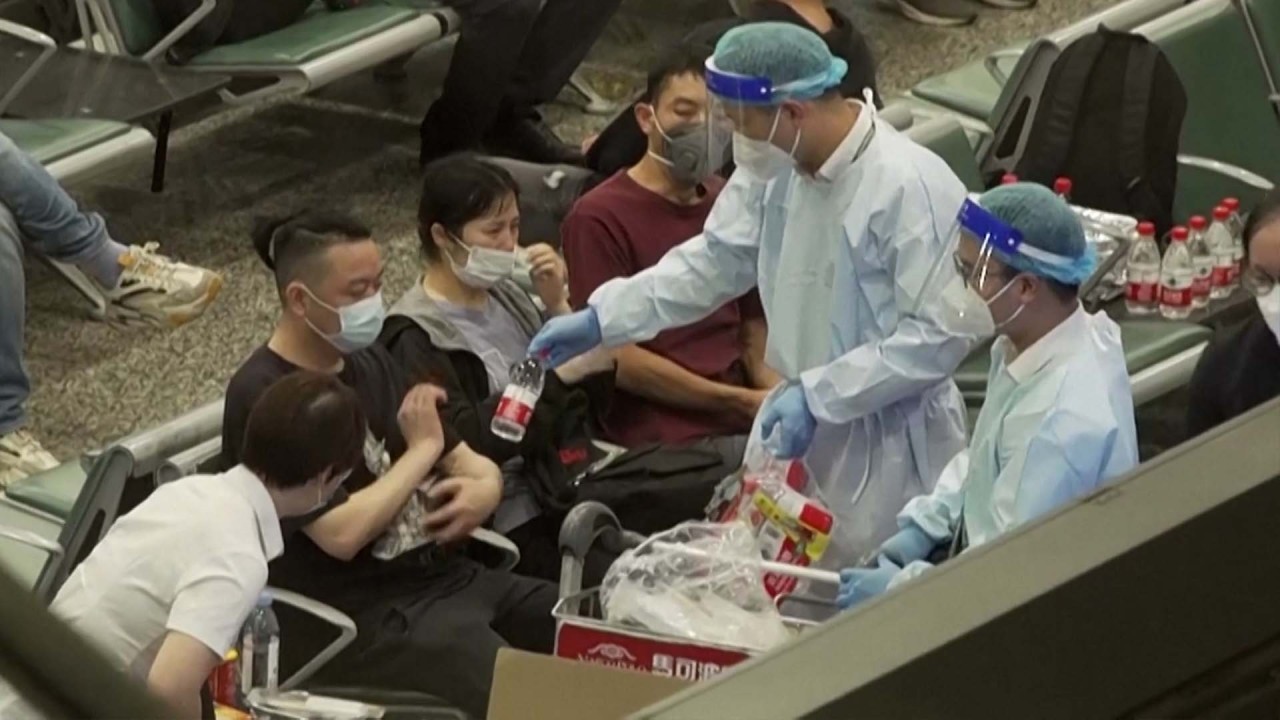
Flight MU5735 crash: bereaved relative demands answers from airline over US report of deliberate dive
- US newspaper reports Boeing 737-800 was flying as directed by cockpit controls, suggesting it was sent on a nosedive intentionally before crashing
- Victim’s uncle says China Eastern Airlines must give families answers if Wall Street Journal report is proved
All 123 passengers and nine crew died in the flight from Kunming to Guangzhou in southern China after the plane dived from a cruising altitude of 8,900 metres (29,199 feet) and disintegrated after ramming into a hill, according to the Civil Aviation Administration of China’s (CAAC) summary of the preliminary investigation report released 30 days after the crash.
The aviation disaster, the deadliest in China since 1994, shocked the country, which has one of the safest flying records. In February, the CAAC had achieved more than 100 million straight hours of safe flying by Chinese carriers – a world record.
Investigators at the US National Transport Safety Board (NTSB) have helped the CAAC, which is leading the investigation, to download information from the cockpit voice recorder and the flight data recorder at its lab in Washington.
“If [the report] is true, it’s so terrible,” said a man surnamed Ouyang, the uncle of an 18-year-old university student from Guangzhou who died in the flight. He spoke on the politically sensitive crash without providing a full name.
“China Eastern Airlines must give us a clear explanation,” Ouyang said.
The Wall Street Journal said information from the flight data recorder, one of the two black boxes that records information about the plane’s flight path and the status of its systems, showed the plane was acting as directed by the cockpit controls.
The person familiar with the investigation cited by the newspaper said it was possible someone had broken into the cockpit and crashed the plane deliberately.
The South China Morning Post could not independently verify the claims. Multiple phone calls to both the CAAC and China Eastern were not picked up.
China plane crash probe finds no evidence navigation instruments failed
The CAAC told Global Times, a tabloid affiliated with Communist Party mouthpiece People’s Daily, that the NTSB had not released information on the probe to any media outlet, citing an investigator involved with the crash.
It did not confirm or deny claims made in The Wall Street Journal report. China Eastern also reposted the Global Times report on the social media platform Weibo.
Joe Hattley, a retired aircraft accident investigator formerly of the Australian Transport Safety Bureau, said a person deliberately sending a plane into a steep descent would be a plausible explanation for the crash.
China Eastern told The Wall Street Journal a cockpit intrusion was unlikely because no emergency code was sent from the plane.
The pilots could select code 7500 on the plane’s transponder – a device that communicates information such as speed and altitude to air traffic control – to signal to air traffic control the aircraft was being hijacked.
Hattley said air traffic control would then alert law enforcement and keep other planes away from the compromised aircraft.
Cockpit doors are locked by a code known only to the crew members assigned to the cockpit, and pilots could rely on a video feed from the cabin to identify potential intruders, he said.
The cockpit voice recorder would have registered conversations and activity in the cockpit, including any intrusions or signs of struggle, Hattley said.
The Journal report did not rely on information from the cockpit voice recorder for claims in the report. Hattley said: “Certainly as an investigator, you’d be looking at data from the flight data recorder and the cockpit voice recorder, and putting all that information together to build a picture, rather than just relying on one source of information.”
Chinese media outlets have not reported on The Wall Street Journal’s story, except to detail the CAAC’s response. Some Weibo users said their posts sharing the article had been censored.
The CAAC has not released more information about flight MU5735 since its preliminary report.
Chrystal Zhang, associate professor of aviation at RMIT University in Melbourne, said the process of gathering available information for an investigation could not be rushed. She said the CAAC also needed to take a “responsible approach” in publishing its findings on China’s most fatal aviation disaster in recent memory.
Zhang said any information that was not scientifically proven or lacking adequate evidence would not be helpful to the investigation and could place unnecessary pressure on investigators and victims’ families.
“Those people’s mental health and experiences also need to be taken into account. This type of news being released is a shock for those people,” she said.
Air tragedy in China after a decade of aviation safety
Zhang said the unofficial release of information would not undermine cooperation and trust between the CAAC and the NTSB because neither agency would compromise safety.
Hattley said such unofficial release of information could complicate the investigation because the conclusions drawn could be incorrect if released while data was still being analysed and interpreted.
“At the end we are, sort of, swimming in the dark here,” Hattley said. “It would be up to the authorities to release information from the flight data recorder and any information from the cockpit voice recorder that is necessary to draw any firm conclusions.”




